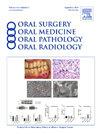Convolutional neural network—assisted detection of pantomographic technique errors
IF 2
3区 医学
Q2 DENTISTRY, ORAL SURGERY & MEDICINE
Oral Surgery Oral Medicine Oral Pathology Oral Radiology
Pub Date : 2025-02-04
DOI:10.1016/j.oooo.2024.11.028
引用次数: 0
Abstract
Objective
Technique errors on dental pantomographic (panoramic) images are relatively common and can interfere with the diagnostic evaluation of the image.
Convolutional neural networks (CNNs) hold promise as a supplemental aid for automated detection and classification of image features. We hypothesize that CNNs are capable of detecting and classifying technique errors in panoramic images with clinically relevant accuracy. In this study, we aim to compare the capability of 2 CNNs and 7 optimizers to accurately recognize technique errors in panoramic images. To the best of our knowledge, this is the first study to explore the use of CNNs in the detection of technique errors on the basis of panoramic images features.
Study Design
Panoramic images were obtained from Stony Brook School of Dental Medicine's PACS, anonymized and classified manually for the presence of multiple classes of technique errors. In phase 1 of the study, we selected images that illustrate one category of error, the presence of palatoglossal air space, and implemented image augmentation for a more robust data set. Images were presented to modified VGG16 (Oxford's Visual Geometry Group 16 layer) and VGG19 CNN architectures. After each CNN was trained with an image subset, a separate validation set of images was presented to it. For each image in the validation set, accuracy of the CNN was measured by correct classification of presence or absence of technical error. Seven optimizers were compared for their accuracy in classification. In phase 2, the aim of the study will be to train a CNN to detect multiple panoramic technique errors.
Results
Current results are 86.5% accuracy using VGG16 with Adam optimizer. Final results are pending and will be presented in the conference poster.
Conclusion
Our results suggest the feasibility of VGG16 with Adam optimizer for the detection of single errors in dental panoramic images.
求助全文
约1分钟内获得全文
求助全文
来源期刊

Oral Surgery Oral Medicine Oral Pathology Oral Radiology
DENTISTRY, ORAL SURGERY & MEDICINE-
CiteScore
3.80
自引率
6.90%
发文量
1217
审稿时长
2-4 weeks
期刊介绍:
Oral Surgery, Oral Medicine, Oral Pathology and Oral Radiology is required reading for anyone in the fields of oral surgery, oral medicine, oral pathology, oral radiology or advanced general practice dentistry. It is the only major dental journal that provides a practical and complete overview of the medical and surgical techniques of dental practice in four areas. Topics covered include such current issues as dental implants, treatment of HIV-infected patients, and evaluation and treatment of TMJ disorders. The official publication for nine societies, the Journal is recommended for initial purchase in the Brandon Hill study, Selected List of Books and Journals for the Small Medical Library.
 求助内容:
求助内容: 应助结果提醒方式:
应助结果提醒方式:


